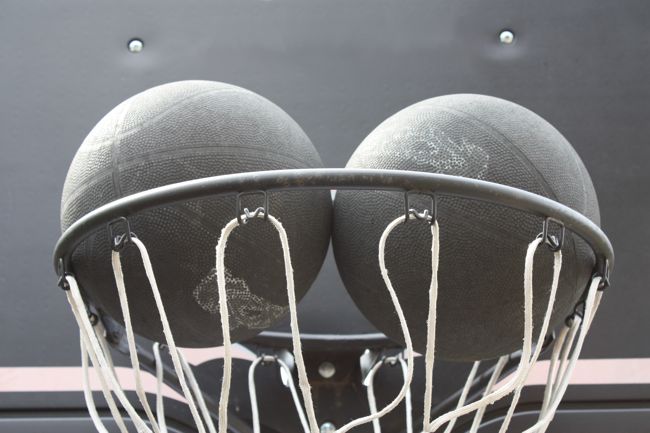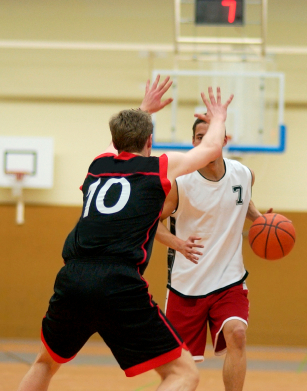
I’m about two months into my tenure as strength and conditioning coach for one of the most highly respected basketball coaches in my area. I had been training the head coach during his brief two-year retirement, and he told me that as soon as he got back into coaching, he would give me a call. Little did we both know that call came only a few months later.
The program that we inherited is a sleeping giant, as the school is a prep school with players from all over the state. When I started, the players were weak, both mentally and physically. I talked with the head coach a few times a week, and we both agreed that we were in this for the long haul and had our work cut out for us. Like many of you probably know, sometimes there is a lack of equipment at the high school level, so I often find myself lugging my own equipment from my underground ‘pit’ where I train my private clients. I’ve been following progressions and ideas from some of the great coaches in our industry, but every once in a while I feel the need to let loose and use my creativity. So I’ll outline a workout that I’ve employed to build physical strength, endurance, and, most importantly, mental toughness.
I work with the team roughly three times per week. Every third or fourth workout, I get them out of the traditional setting. I set up a circuit on the actual basketball court and break it into four quarters, meaning each time through is one quarter. After I discuss how to run this circuit, I will break down why I feel each component is useful. Feel free to take it and tweak it for your own purposes.
I divide the court up into five different lanes. However, the lane in the free throw area must be left clear for the entire length of the court (pretend they’re connected from one hoop to the next). If ten players are at a summer practice, I’ll start five on one end of the court and five on the other so they’re facing each other (we’ll call these lines one and two). The first line starts where the baseline meets the side line.
The first player in line one does a plate push all the way down to the other base line. You can place the plate on an old towel or T-shirt. Once the player has stopped pushing, he will grab ropes that are attached to a heavy bag and backpedal while dragging the bag to the original baseline from which he started. He then picks up two dumbbells in the 10–20-lb range, which are located on a mat under the hoop (remember these are high school kids). The player then performs 15 repetitions of lateral raises. Like many of you, I normally don’t like isolation exercises except for those that target the shoulder and hip joint (thanks Coach Boyle).
After he bangs out his reps, the player puts the weight down and does three full court sprints (down, back, and down again). After the third sprint, he slaps the floor (ala Duke) and does a defensive slide to half court. Then, he turns around to finish the last half of the court facing the other way. At this point, the player is gassed, but he isn’t quite done. He has now worked all the way to the other sideline. He performs crocodile walks to half court and jumps up.
For the finisher, I have a 5-lb medicine ball at the top of each key with two (eagerly awaiting) assistant coaches holding tackling pads or stability balls. The player runs to one ball and holds on to it like a football (they don’t bounce effectively enough to use like basketballs). He charges toward the basket, and the assistant coach bangs him around with the dummy. The point is to make the basket in a fatigued state while getting hammered, which is sort of like what can happen at the end of an intense game, except without the dribbling. The player then has a few minutes before the drill starts over again.
Below, I’ll briefly outline the benefits of each lane.
- Plate pushes: The athlete is staying low and performing a pushing movement in which hip extension is utilized.
- Heavy bag pulls: Here the athlete is backpedaling against resistance, thus performing an eccentric hip extension.
- Dumbbell lateral raises: The athlete is fatiguing at this point, and one area of concern for basketball players is their shoulders. We are working on strength endurance and improving the stability and strength of this ball and socket joint.
- Sprints: Basketball is a game of sprinting, stopping, and changing directions. This is kind of like a shuttle run and is great for injury reduction and anaerobic conditioning.
- Defensive slides: Again, this is basketball specific, and I really monitor how low they’re staying, thus the floor slap. We’re working a lateral movement using the adductors and abductors.
- Crocodile walks: If you’ve never tried these before, you’re missing out. They are great for upper body strength and are tough enough when done on their own. This is also a great exercise for this age group because they’re building the strength to be able to handle their own body weight.
- Kill the man with the medicine ball; go hard or go home: This finisher is great because the player needs to concentrate and get a heavy ball up into the hoop while getting hit by the coach. I instruct the coach to stop chasing and hitting the player once he gets to within five feet of the hoop. If the player misses, he must continue shooting the lay up until it goes in.
All of these movements are great for mental toughness, and they are all difficult when put together!









